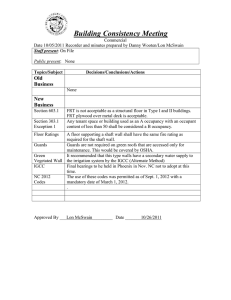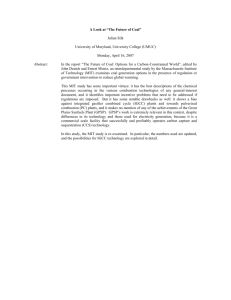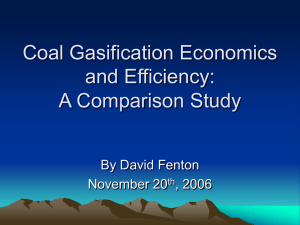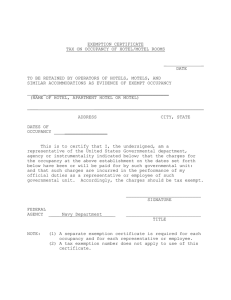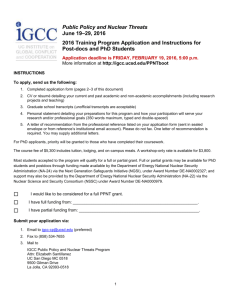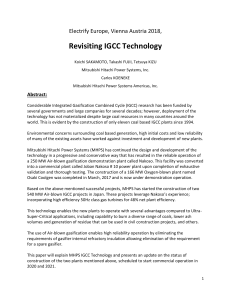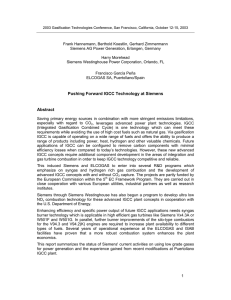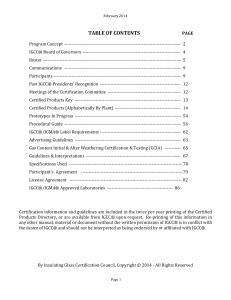A Potential Framework for Outcome-based Compliance in the International Green Construction Code
advertisement
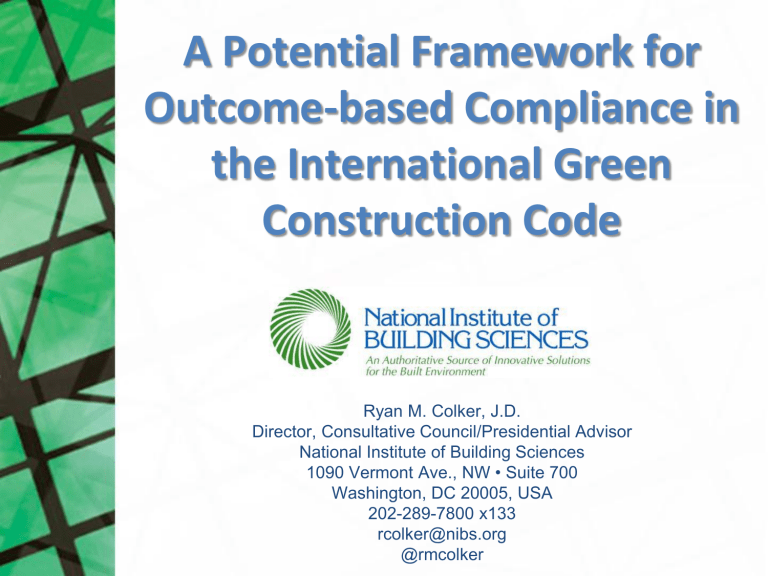
A Potential Framework for Outcome-based Compliance in the International Green Construction Code Ryan M. Colker, J.D. Director, Consultative Council/Presidential Advisor National Institute of Building Sciences 1090 Vermont Ave., NW • Suite 700 Washington, DC 20005, USA 202-289-7800 x133 rcolker@nibs.org @rmcolker Why Outcome-Based Pathways in Codes? • Current codes focus on design and not the actual measured energy use of a building • Codes provide uniformity in approach • Provide starting point for jurisdictions considering such approaches • Pathway to realize expected result recognizing current burdens faced by code departments What is the International Green Construction Code? • An overlay code • Provide code language above existing codes to help realize a community goal • Compliance with existing codes required (IBC, IECC, etc.) • Typically adopted as optional method to achieve sustainability goals • Basis for incentive programs • Application for government buildings • Applied by owner as design criteria Why Outcomes in the IgCC? • One of three potential pathways to demonstrating compliance with energy requirements • As an overlay code, IgCC provides low risk opportunity to preview upcoming code provisions • Recognition of limited capacity at code departments to enforce energy code provisions • Recognition of system based approaches Why Outcomes in the IgCC? DESIGNERS. . . should get credit for all energy saving measures. COMMUNITIES. . . should have some assurance that energy efficiency goals are being met. OWNERS. . . should have some certainty in energy usage and be recognized for effective operations and maintenance. CODE OFFICIALS. . . should get desired energy performance without additional burdens. MANUFACTURERS. . . should have the opportunity to develop the most innovative products that help meet performance targets. Benefits of an Outcome-Based Pathway in the IgCC OPTIONAL One of three pathways for compliance with energy requirements in the International Green Construction Code (IgCC). FLEXIBLE The design team has flexibility in selecting features, attributes and specifications. ACTUAL Compliance is based on the achievement of actual energy performance, not theoretical performance. ACCURATE Compliance is determined through utility bills over a 12-month period. EFFICIENT Recognizing fiscal, technical and personnel constraints on code departments, the burden for demonstrating compliance above the IECC falls on the building owner. RESULTS Building owners and communities are provided some assurance that buildings will perform at target levels. The Proposal: GEW 147-14 • Adds new section establishing outcome-based pathway option • Compliance with the IECC is required • Uses table of target values based on CBECS by climate zone and building type – Only building types with sufficient data can use this pathway • Consistent with the other sections of the IgCC, greenhouse gas emission requirements are calculated • Compliance determined by ratio of actual energy use/reference energy use The Proposal: GEW 147-14 • Temporary Certificate of Occupancy issued if all other provisions met • Within 36 months of Temporary Certificate of Occupancy, the Owner documents at least 12 months of compliance • If compliant, Final Certificate of Occupancy issued • If non-compliant, the code official may elect to pursue recourse. Otherwise, the temporary certificate of occupancy remains – potentially hinders the owner’s ability to sell, lease, insure or finance • Recourse for noncompliance is left up to the individual jurisdiction The Proposal: GEW 147-14 Supporters • • • • National Institute of Building Sciences New Buildings Institute Institute for Market Transformation Colorado Chapter, International Code Council The Proposal: GEW 147-14 Timeline • Proposal to be considered at Committee Action Meeting, April 27 – May 3, Memphis – Assembly actions voted on via CDP Access • Public Comment Hearing, October 1-7, Ft. Lauderdale – Online Governmental Consensus Vote via CDP Access http://www.wbdg.org/resources/outcomebasedpathways.php http://newbuildings.org/outcome-based-energy-codes
